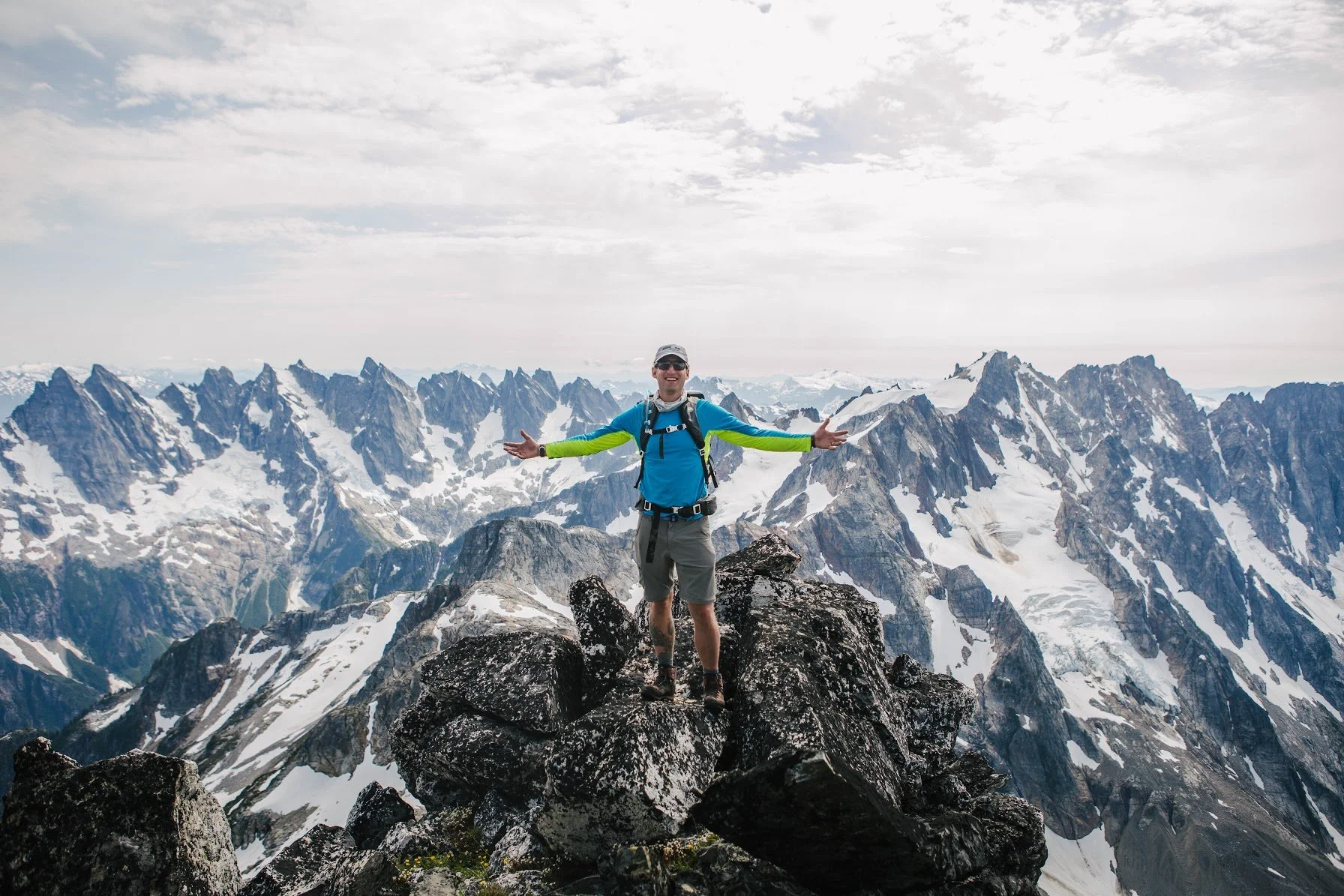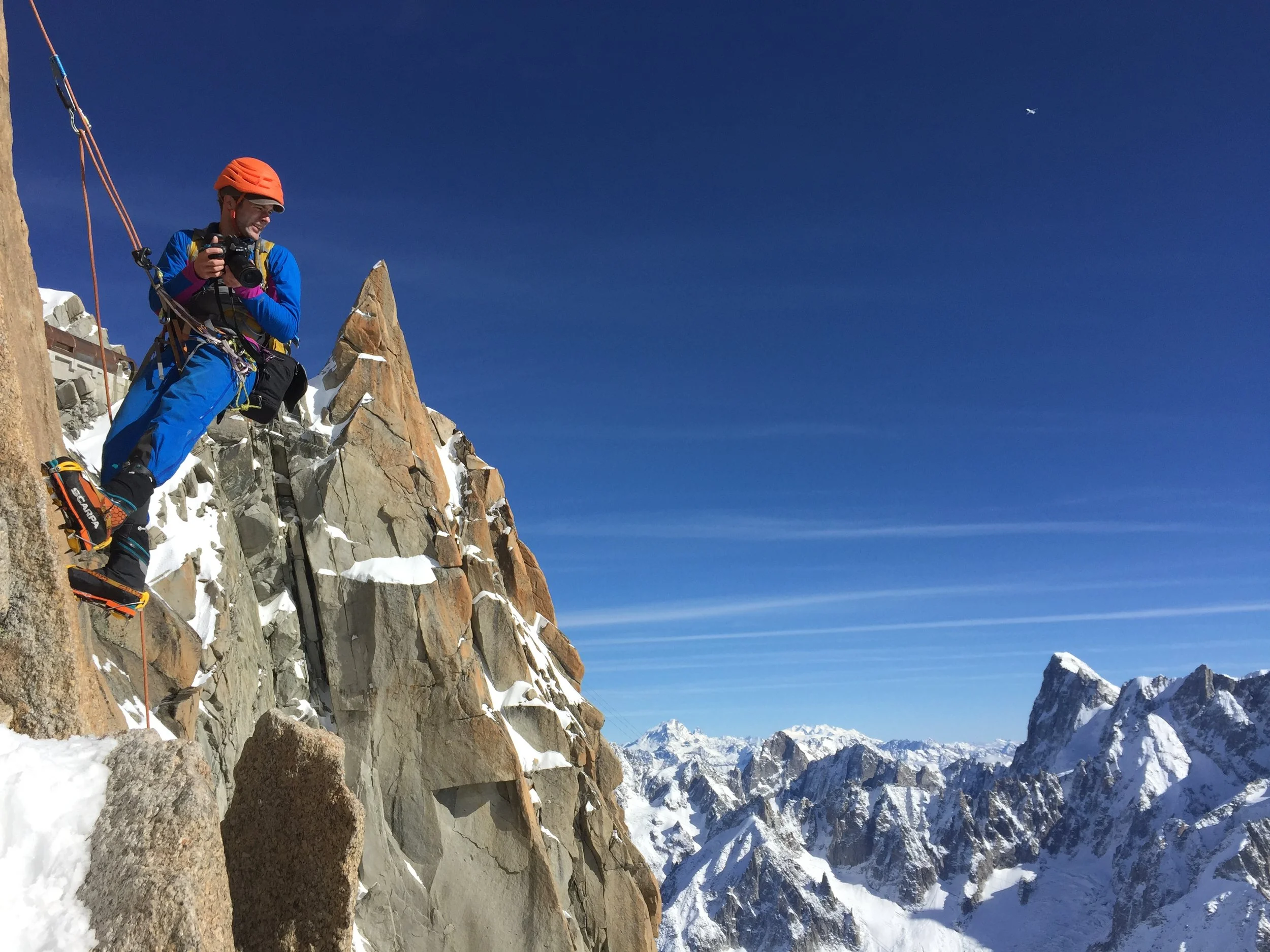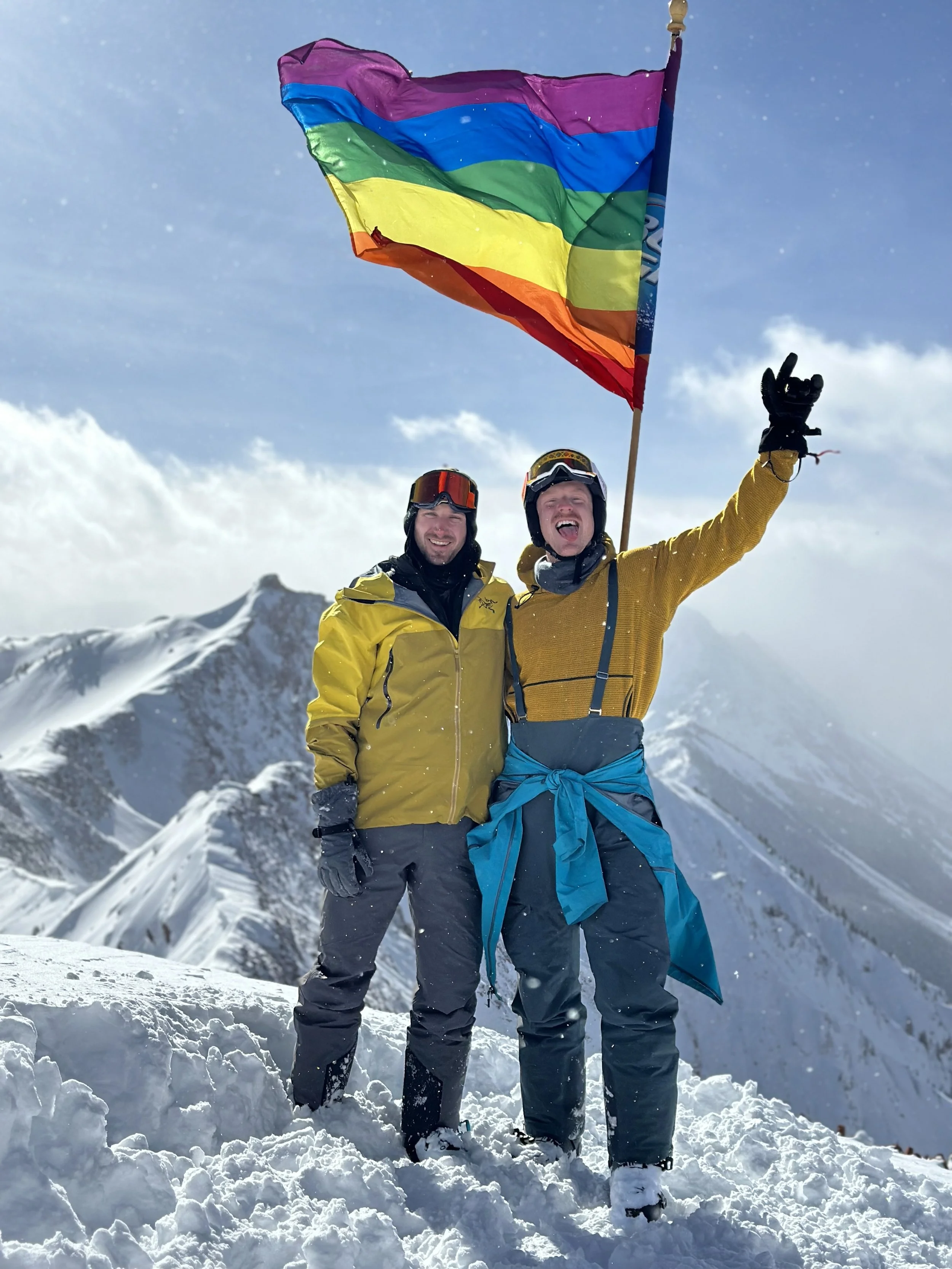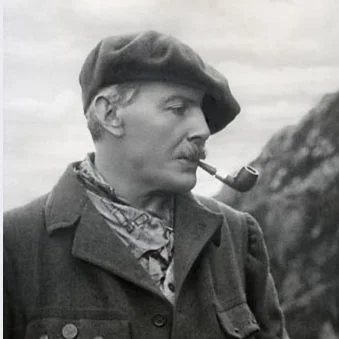climbing into history
A local man’s search for queer role models in the Swiss Alps
Words by Lance Garland
Expedition photographer and mountain guide Ben Tibbetts (Photo: courtesy of Lance Garland)
HAVE YOU EVER HAD A ROLE MODEL IMPACT WHAT YOU THOUGHT WAS POSSIBLE? POET MAYA ANGELOU ONCE SAID, “HOW IMPORTANT IT IS FOR US TO RECOGNIZE OUR HEROES AND SHE-ROES!” BUT WHAT DO YOU DO IF YOU CAN’T FIND ROLE MODELS THAT RESEMBLE YOU? THAT’S WHERE THE ADVENTURE BEGINS FOR OUR PROJECT.
In the spring of 2023, I discovered a man from the early 1900s named Richard Halliburton who was posthumously described as “the gay Indiana Jones.” His life story thrilled me. Nearing the end of my 30s, I couldn’t believe it had taken me so long to find his story. As a Navy veteran, a Seattle firefighter, and a mountain climber in my free time, I finally felt that I’d found a historical figure like me. The only difference: he couldn’t live openly. I started putting together a proposal to tell his story. A magazine I had written for, Hidden Compass, offers exploration grants to tell stories just like his, so I applied with the idea of climbing in the European Alps while investigating his life. I needed a team for the climb, so I invited my friend and fellow Bainbridge Islander Charlotte Austin to join. She was excited and asked me, “Did you know that George Mallory was gay?” I’d never heard that before, which was shocking because Mallory famously died trying to be the first person to climb Mt Everest. He’s legendary in climbing history, and I added him into the proposal as well. Strangely, Mallory was connected to another climber that I’d just discovered, Geoffrey Winthrop Young. The connections I found between them were transformative for my story. All three men climbed on or near the Matterhorn. Now I had a physical location to tie together these three climbers from different times and a climbing objective of my own: the Matterhorn.
Charlotte had been writing about representation in climbing for a long time, with first-hand knowledge of what it’s like to be a minority in the male-dominated field of mountain guiding. As a straight woman her perspective expanded our material and extended it to other groups who might also feel like they lacked representation and role models. In her essay, “Freedom in the Hills,” she says, “As members of wider demographic groups move past preconceived notions of their abilities, we’ll see higher standards in alpinism. And more climbers will be able to experience moments of true freedom in the hills.”
To finalize our crew, I invited British adventure photographer Ian Finch to join the climb. I’d met him the previous year on a backpacking trip in the Rockies, and he was eager to join the team. I named the project “Beyond the False Summit, An expedition to climb the Matterhorn and unearth the queer pioneers of alpinism.” I sent it off and immediately got to work.
The project was focused on queer role models from the past, but I wanted to contextualize that with examples from the present day. I reached out to pro-climber Jordan Cannon to ask him what it’s like being an openly gay athlete, and if he knew about the queer history of alpinism. He was personally interested in both the research and the project. As fate would have it, he was going to be in the Alps at the same time as our climb this summer, so I asked him if he wanted to come with us. With a magnetic ease, we had an additional member to our climbing crew.
Pro-climber Jordan Cannon (left) and Wyn Wylie (right) in Aspen, CO (Photo: courtesy of Lance Garland)
One fine autumn day, we were notified that our project was a finalist for the prize, and after a brilliant opportunity to share our story with audiences, they voted and awarded us the grant. On the day we were awarded the Pathfinder Prize, our photographer, Ian, notified me that he had an injury and needed surgery. There was no way he’d be ready to climb the Matterhorn in July. It was a major blow to the project, and we had only just begun!
We needed a new photographer but were on a tight budget. Ian would have done the climb for free, but now we’d have to pay most of our grant to a photographer who had the skills to summit mountains. Paying for a flight would be expensive, so I researched climbers in the Alps who were also photographers. I found Ben Tibbetts and reached out to him. He was attracted to the project because it featured a climber he had written about himself, Young, and he became a seamless addition to the crew because of his expertise in climbing history, his world-class photography, and his intimate knowledge of the local terrain.
We plan to climb on the Matterhorn this July 21 - 27, which gives us a buffer to find an ideal weather window. From basecamp on the mountain, the Matterhorn is typically summited in one long day, so this gives us multiple attempts.
Until then, I’ll be climbing locally in preparation for the Matterhorn. Already, this project is bigger than I had anticipated. Physical training, logistical planning, historical research, and community outreach are all coming together as our project grows. Not only do we hope to climb the world’s most dangerous peak, but we hope to do justice to the stories of these queer climbers as we reveal facets of their lives that they never publicly expressed themselves. How we do so will be like ascending the fine lines of routes on the Matterhorn.
@beyondthefalsesummit / @hiddencompassmedia
To become a project sponsor, visit: beyondthefalsesummit.com


Photos: courtesy of Spencer Kirk
Photo: courtesy of Lance Garland
Geoffrey Winthrop Young was a British climber, writer, and outdoor educator credited with collaborating on the creation of the Outward Bound movement, an organization designed to foster personal growth from outdoor adventures. As an alpinist, Young made first ascents in the Alps and in Britain during the 1910’s-1920’s and wrote influential mountaineering manuals and memoirs. Geoffrey was married to Eleanor Winthrop Young, and they had two children together, but after Geoffrey’s death Eleanor confirmed that he was in fact bisexual. Little is known about that part of Young’s identity, but our project aims to give that part of Geoffrey’s life the respect it deserves and the acceptance that he never received during his life. In many ways, Geoffrey is a queer icon, and we want to lift his story up to where it should rightfully reside in mountaineering history.



